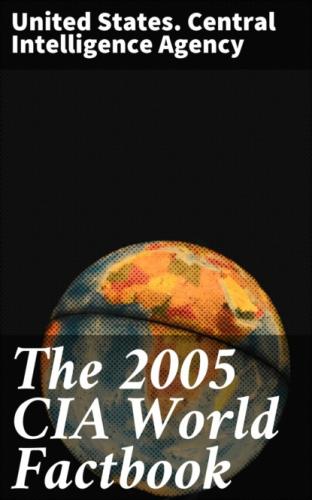Maritime claims:
territorial sea: 12 nm
contiguous zone: 24 nm
exclusive economic zone: bilateral agreements or median lines in the
Persian Gulf
continental shelf: natural prolongation
Climate:
mostly arid or semiarid, subtropical along Caspian coast
Terrain:
rugged, mountainous rim; high, central basin with deserts,
mountains; small, discontinuous plains along both coasts
Elevation extremes:
lowest point: Caspian Sea −28 m
highest point: Kuh-e Damavand 5,671 m
Natural resources:
petroleum, natural gas, coal, chromium, copper, iron ore, lead,
manganese, zinc, sulfur
Land use: arable land: 8.72% permanent crops: 1.39% other: 89.89% (2001)
Irrigated land:
75,620 sq km (1998 est.)
Natural hazards:
periodic droughts, floods; dust storms, sandstorms; earthquakes
Environment - current issues:
air pollution, especially in urban areas, from vehicle emissions,
refinery operations, and industrial effluents; deforestation;
overgrazing; desertification; oil pollution in the Persian Gulf;
wetland losses from drought; soil degradation (salination);
inadequate supplies of potable water; water pollution from raw
sewage and industrial waste; urbanization
Environment - international agreements:
party to: Biodiversity, Climate Change, Desertification, Endangered
Species, Hazardous Wastes, Marine Dumping, Ozone Layer Protection,
Wetlands
signed, but not ratified: Environmental Modification, Law of the
Sea, Marine Life Conservation
Geography - note:
strategic location on the Persian Gulf and Strait of Hormuz, which
are vital maritime pathways for crude oil transport
People Iran
Population:
68,017,860 (July 2005 est.)
Age structure:
0–14 years: 27.1% (male 9,465,475/female 8,973,828)
15–64 years: 68% (male 23,556,970/female 22,701,065)
65 years and over: 4.9% (male 1,637,512/female 1,683,010) (2005 est.)
Median age:
total: 24.23 years
male: 24.03 years
female: 24.44 years (2005 est.)
Population growth rate:
0.86% (2005 est.)
Birth rate:
16.83 births/1,000 population (2005 est.)
Death rate:
5.55 deaths/1,000 population (2005 est.)
Net migration rate:
−2.64 migrant(s)/1,000 population (2005 est.)
Sex ratio:
at birth: 1.05 male(s)/female
under 15 years: 1.06 male(s)/female
15–64 years: 1.04 male(s)/female
65 years and over: 0.97 male(s)/female
total population: 1.04 male(s)/female (2005 est.)
Infant mortality rate:
total: 41.58 deaths/1,000 live births
male: 41.75 deaths/1,000 live births
female: 41.41 deaths/1,000 live births (2005 est.)
Life expectancy at birth:
total population: 69.96 years
male: 68.58 years
female: 71.4 years (2005 est.)
Total fertility rate:
1.82 children born/woman (2005 est.)
HIV/AIDS - adult prevalence rate:
less than 0.1% (2001 est.)
HIV/AIDS - people living with HIV/AIDS:
31,000 (2001 est.)
HIV/AIDS - deaths:
800 (2003 est.)
Nationality:
noun: Iranian(s)
adjective: Iranian
Ethnic groups:
Persian 51%, Azeri 24%, Gilaki and Mazandarani 8%, Kurd 7%, Arab
3%, Lur 2%, Baloch 2%, Turkmen 2%, other 1%
Religions:
Shi'a Muslim 89%, Sunni Muslim 9%, Zoroastrian, Jewish, Christian,
and Baha'i 2%
Languages:
Persian and Persian dialects 58%, Turkic and Turkic dialects 26%,
Kurdish 9%, Luri 2%, Balochi 1%, Arabic 1%, Turkish 1%, other 2%
Literacy:
definition: age 15 and over can read and write
total population: 79.4%
male: 85.6%
female: 73% (2003 est.)
Government Iran
Country name:
conventional long form: Islamic Republic of Iran
conventional short form: Iran
local long form: Jomhuri-ye Eslami-ye Iran
local short form: Iran
former: Persia
Government type:
theocratic republic
Capital:
Tehran
Administrative divisions:
30 provinces (ostanha, singular - ostan); Ardabil, Azarbayjan-e
Gharbi, Azarbayjan-e Sharqi, Bushehr, Chahar Mahall va Bakhtiari,
Esfahan, Fars, Gilan, Golestan, Hamadan, Hormozgan, Ilam, Kerman,
Kermanshah, Khorasan-e Janubi, Khorasan-e Razavi, Khorasan-e
Shemali, Khuzestan, Kohgiluyeh va Buyer Ahmad, Kordestan, Lorestan,
Markazi, Mazandaran, Qazvin, Qom, Semnan, Sistan va Baluchestan,
Tehran, Yazd, Zanjan
Independence:
1 April 1979 (Islamic Republic of Iran proclaimed)
National holiday:
Republic Day, 1 April (1979)
note: additional holidays celebrated widely in Iran include
Revolution Day, 11 February (1979); Noruz (New Year's Day), 21
March; Constitutional Monarchy Day, 5 August (1925)
Constitution:
2–3 December 1979; revised 1989 to expand powers of the presidency
and eliminate
